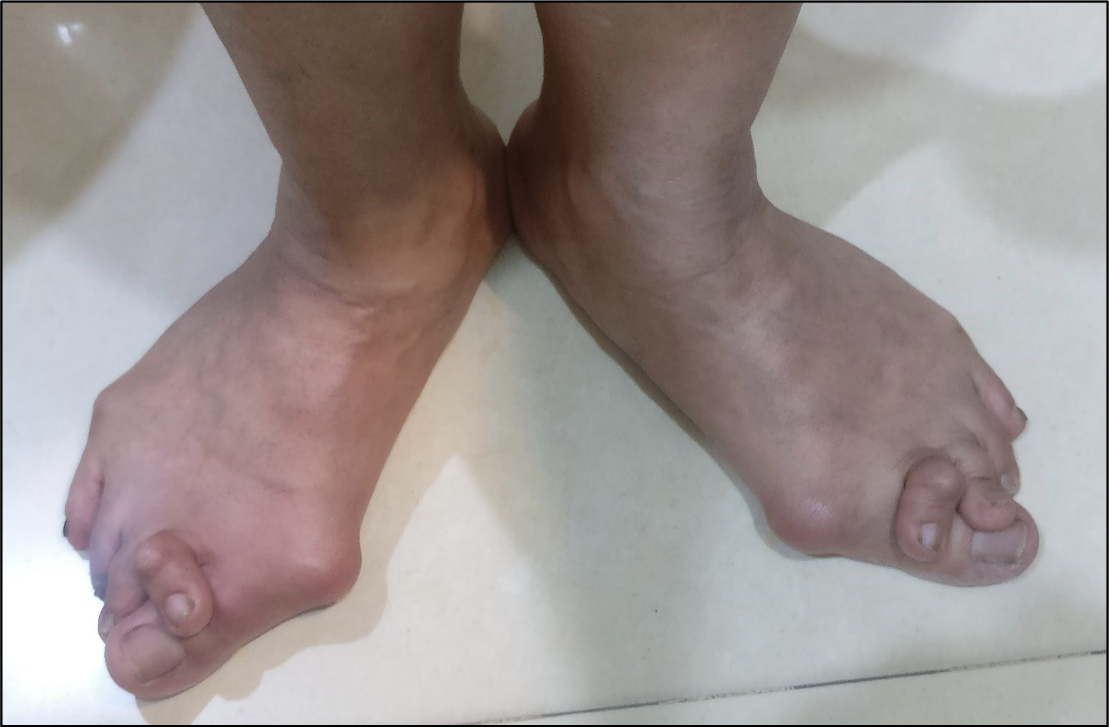
What is a Bunion?
A Bunion or Hallux Valgus is a deformity of the joint between the foot and the great toe. It causes the tip of the big toe to be pulled towards the smaller toes causing pain over the base of the big toe. It is a multiplanar deformity found in 2-4 % of the population. Females in the age group of 20-50 yrs are more commonly affected by it can occur in adolescents too.
What causes Bunions?
The causes are many and unclear. Some of the causes that are implicated include:
1- Wearing tight narrow footwear or high heeled shoes
2- Genetic Predisposition. Females may inherit it from their mothers.
3- Tight calf muscles.
4- Flat feet.
5- Rheumatoid arthritis.
6- Generalised hyperlaxity of joints.
7- Neuromuscular disorders like polio.
What are the symptoms of Bunions?
Most patients present with: -
1- A bump on the inner side of the base of the big toe. 2- Swelling or pain around the big toe joint or undersurface of forefoot. 3- Corns or calluses on the undersurface of the foot or where the first and 2nd toes rub against each other. 4- Smaller toes deformities. 5- Limitation of big toe movements. 6- Alteration in gait or impaired balance especially in the elderly.
When should you see a doctor?
You need to see a foot and ankle specialist when: -
♦ The deformity is increasing.
♦ There is ongoing big toe joint or foot pain.
♦ Difficulty in finding properly fitting shoes due to the bunion deformity.
♦ Restrictions of big toe joint movements.
♦ Deformities are developing in the smaller toes due to the bunion
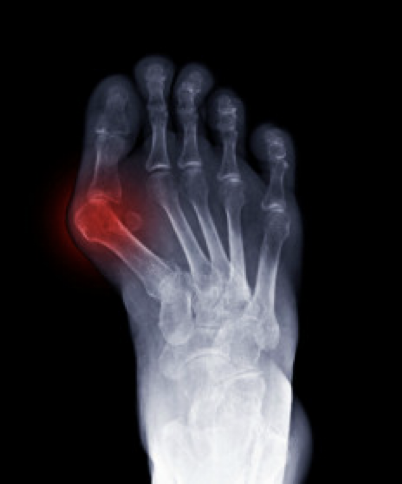
What to expect at the Doctors clinic?
The doctor will examine your foot and the components of the deformity in detail. He will also examine the way you walk (Gait). The doctor may order some blood investigations and X rays of your foot and ankle in standing and lying down position to see the alignment of your bones. This will help him assess the severity of the deformity and how to treat it.

What are the Non-Surgical treatments available?
Most cases are treated Non surgically. Although this will not fully correct the deformity but it can help in reducing the pain and prevent the worsening of the deformity. Some of the treatment options available include: -
1- Proper selection of footwear or custom-made shoes.
While selecting the shoes one should make sure the shoes do not compress the toes. Select shoes with wide and high toe box and soft soles. Avoid short sharply pointed shoes with high heels. High heels shift the weight of your body to your forefoot thereby worsening the deformity and pain. Your doctor can help you select the proper footwear or order custom made shoes.
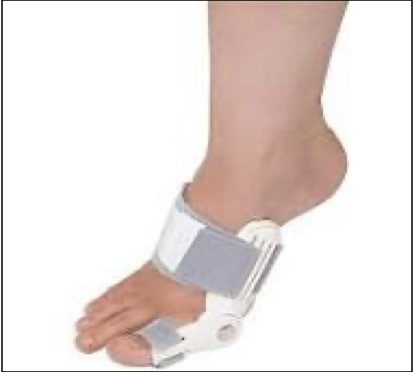
2- Orthotics and Pads
To relieve pressure off your bunion your doctor may prescribe over the counter or custom-made shoe inserts or orthotics or even toe spacers. Bunion splints may be worn at night to relieve the pain and prevent the worsening of the deformity.
3- Exercises
If you have a Flat foot or tight calf muscles, the doctor may advice some exercises for the same.
4- Medicines
Non-Steroidal anti-inflammatory medications can help reduce the pain and swelling associated with the deformity. Other medications for inflammatory arthritis or to increase the health of the joint cartilage may also be used.
When is Bunion Surgery required?
The doctor may recommend bunion surgery if your symptoms do not improve despite footwear changes and other non-surgical treatments. Bunion surgery helps to realign the bones, ligaments and tendons which help to relieve the pain and correct the deformed toe. You may stay in the hospital for 1-3 days depending on the severity of your deformity. Stitches are usually removed in 2 weeks’ time but bone healing may take a bit longer. You will be advised to practice guarded weight bearing during this time.
What are the types of Bunion surgery?
Since Bunions vary in size and shape, there are various types of bunion surgery available. Most of them involve correcting the alignment of the bones and balancing the soft tissues around the big toe. Your doctor can guide you as the best procedure that will correct your deformity. There are 4 basic procedures that have been described as follows: -
1- Soft tissue balancing around the big toe with bunionectomy
In some cases, soft tissue on the outer side of the big toe may be too tight while they may be loose on the inner side. This causes the big toe to drift outwards. Surgery can help release the tight tissues and shorten the loose ones. Soft tissue procedures are never done in isolation but are always accompanied by bone osteotomies. Bunionectomy or removing the bump of the big toe also usually accompanies a soft tissue procedure.
2- Osteotomies
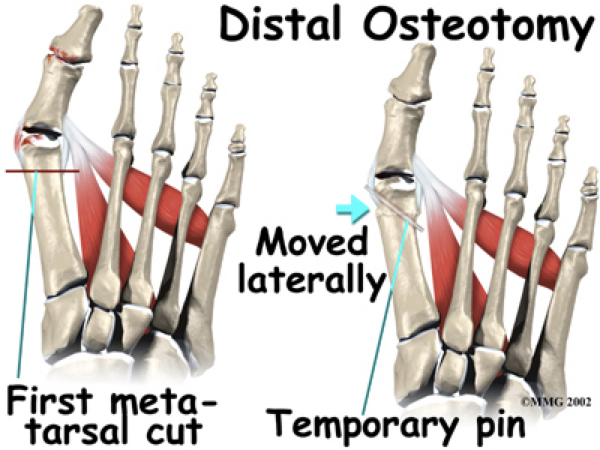
In osteotomies, your doctor makes small cuts in the bones to realign them. These bones are then fixed with pins, screws or plates. The osteotomies may be performed in different parts of the bone depending on the deformity. They may be combined with soft tissue balancing surgery.
3- Arthrodesis
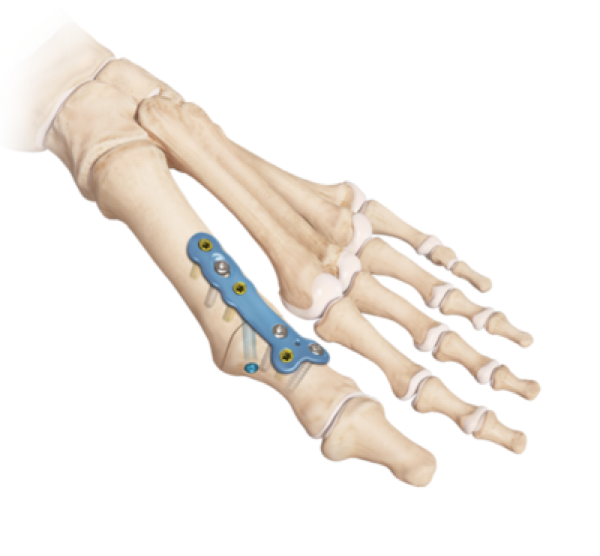
This involves removing the cartilage from the arthritic joint surfaces and fixing the 2 surfaces together with pins, screws or plates until they heal. Arthrodesis is usually done for severe deformities or arthritis or in cases where have had previous unsuccessful surgeries.
4- Resection arthroplasty
In this procedure the doctor removes the damaged portion of the joint and fills the space created at the joint with soft tissue. This creates a ‘flexible scar’ at the joint allowing for pain free joint movement. This procedure is usually indicated in elderly patients with severe arthritis who are not amenable to an arthrodesis. This is not indicated for younger patients with an active lifestyle.
What to expect from a bunion surgery?
The goals of bunion surgery are:
♦ To realign the bones that make up the big toe and the foot.
♦ To provide pain relief.
It is important to have realistic expectations from your bunion surgery and discuss those with your doctor. For example,
bunion surgery may not always allow you to wear narrow pointed shoes with high heels although it may offer the much-needed pain relief.
What to expect after Bunion surgery?
You may have regular visits to your doctor for a few months to a year after surgery to make sure the bones are healing properly.
Dressing Care
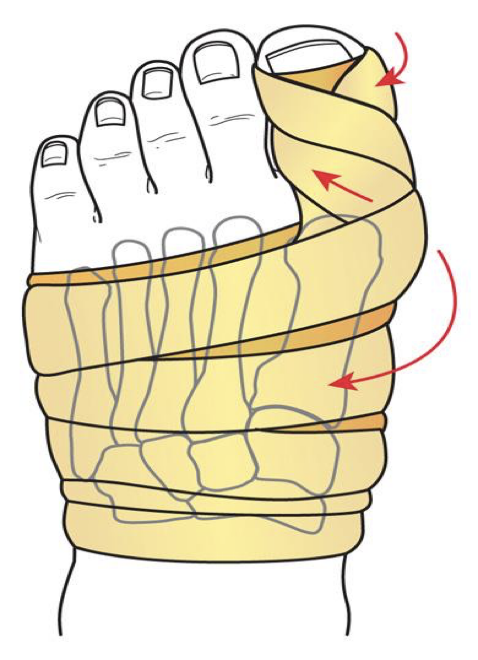
You would be discharged from the hospital with a dressing or a plaster depending on the procedure performed. It is important to keep your leg elevated and keep the dressing dry while bathing or showering. The dressing may be changed once or twice before stitch removal which usually happens at 2 weeks.
Medicines
You may be prescribed medicines for pain relief and antibiotics to prevent infection in the surgical wound till it heals
Swelling
You are likely to have swelling in the operated foot after surgery which will gradually subside with time. It is important to keep the limb elevated when not waking to decrease the swelling. Swelling may persist for 6 months to 1 year in some cases.
Weight bearing
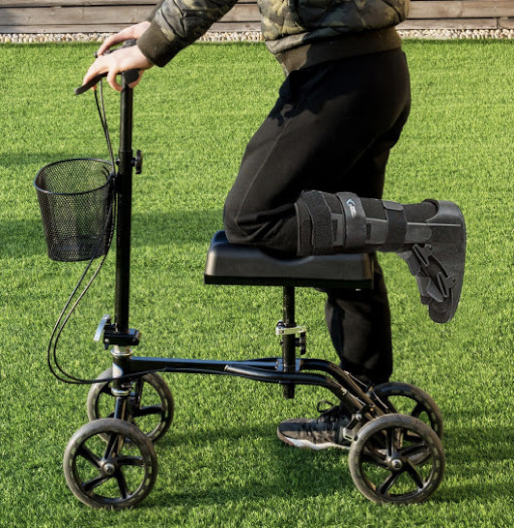
Your doctor may advise you to avoid weight bearing on the operated foot or walk with heal weight bearing special footwear depending on the type of procedure performed for a period of 6 weeks to 3 months. Your doctor may apply dressings brace or cast to maintain the correction during this time. Early weight bearing before the bones have healed may displace the bones and the correction may be lost. During this time, you can either use crutches while walking or a knee scooter which puts the weight on your knee instead of your foot while walking.
Physiotherapy
Certain exercises to increase the strength of your foot muscles and range of motion of the joints may be advised after the wound heals.
Shoe wear
When the bones are completely healed and your rehabilitation is complete, the doctor will advise appropriate shoe wear. The initial shoes will protect your bunion and prevent recurrence of your deformity. You will eventually go back to wearing normal footwear, however tight high heeled shoes should be avoided to prevent recurrence of the deformity.

